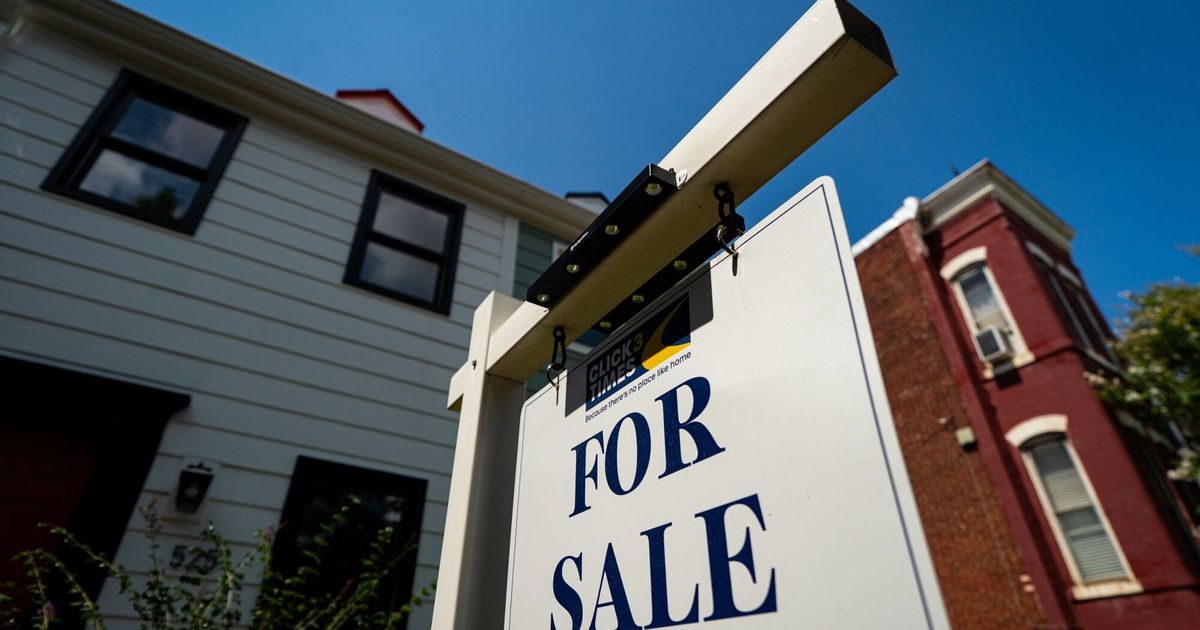Bradfield Farms, a community of about 1,000 houses on the outskirts of Charlotte, N.C., is no longer a place where a young, middle-income couple can easily buy a modest house for less than $200,000. Just a few years ago, it was.
Alvin Maisonet became the first person in his family to own a home — a two-story house with shade trees in the front yard in Bradfield Farms — on his 36th birthday.
For $148,500, Maisonet, a truck driver, now 44, and his wife, Patricia, a nurse, 43, traded a frenzied life in Paterson, N.J., for generational wealth and tranquillity. Joggers waved and said hello. The grassy backyard was bucolic; Patricia Maisonet envisioned a pool. “I felt like I was a princess in the middle of my castle,” she said.
Now, a newcomer is more likely to rent a house from a corporate landlord with a name such as FirstKey Homes, Main Street Renewal, HomeRiver Group or Progress Residential.
Wall Street has come for the starter home.
First-time buyers, who overwhelmingly rely on mortgages, were often outmatched by cash buyers at the beginning of the COVID-19 pandemic, when interest rates plummeted below 3% and home prices soared. Across the United States, more than one-third of all sales in 2022 were in cash. Many of those houses went to families and individuals, but investors paying cash accounted for nearly 10% of home purchases that year, according to data from ATTOM, a property data analytics company. Investor activity was even higher in fast-growing Sun Belt cities such as Charlotte, Atlanta and Phoenix.
Investors were largely uninterested in wealthier enclaves. Instead, they targeted middle-income neighborhoods, many with larger Black and Latino populations. Bradfield Farms fits the bill: It is in an area that, in 2020, was 35% Black and 11% Latino, according to census data.
Over two years, from 2021-22, investors snapped up properties in Bradfield Farms at roughly three times the rate of the citywide average of 17%, according to a New York Times analysis of ATTOM’s data.
Homeowners were inundated with calls, text messages, letters and emails from people offering to buy their homes sight unseen. The buyers closed fast and used inscrutable names that ended in LLC.
Cash offers from investors are appealing. A homeowner does not have to stage the house, wait for an appraisal and inspection or watch a sale fall apart if the buyer can’t get a mortgage.
The single-family rental industry sees its efforts as providing a vital social benefit: People need homes to rent, and Wall Street has the deep pockets to help.
A rental lowers the barrier of entry into a neighborhood. If you can’t afford a down payment or don’t have strong enough credit for a mortgage, a “For Rent” sign changes the equation. More Black households move into white neighborhoods when the share of rentals grows, increasing diversity, a 2021 study found.
Advocates of affordable housing argue that the proliferation of single-family rentals traps would-be buyers.
“It’s a thing of scale — they’re reaching near monopoly in some places,” said Madeline Bankson, a housing research coordinator at the nonprofit Private Equity Stakeholder Project. “They’re shutting people out of the homebuying process.”
Tarchia Barber liked the rural feel of Bradfield Farms, with cul-de-sacs and shady streets surrounded by farmland and woods. “I’m a country girl,” she said, standing on her lawn one steamy afternoon, a “Home Sweet Home” sign on her walkway and bags of fresh mulch in the flower beds. When Barber moved into the house in December 2021, her neighbors left cookies, cards and flowers on her doorstep. When a neighbor cleaned her gutters unprompted, she thanked him with a cheesecake.
But her landlord, Progress Residential, has been slow to make repairs, Barber said. “My last landlord addressed problems within 24 hours,” she said. “He didn’t go through a property management company. He’d come and look at it in the day.”
By contrast, she has waited five or six days for a Progress technician to arrive after submitting work orders for repairs to a blocked dryer vent and a leaking shower. Nikki Sloup, a Progress Residential spokesperson, said in an email that the company “responded to and completed all work orders,” sending out multiple technicians.
When Barber renewed her lease last year, Progress increased her rent by 11%, to $1,876 a month, an amount Sloup described as “below market rates.”
What would have happened if a person, instead of a corporation, had bought the three-bedroom house for $300,000 in 2021? With a modest 3.5% down payment on a 30-year loan, the homeowner would now be paying roughly $1,200 a month in interest and principal, given the mortgage rates at that time. While homeowners are responsible for utilities, property taxes, repairs and association fees, they also build equity over time.
A decade ago, Becky Johnson, 71, didn’t know of any rentals on her street. Now, 41% of the homes there are corporate-owned, single-family rentals. Johnson, a retired computer security worker whose olive-green house has an American flag flying on the garage door and a “Thank You, Jesus” sign on the walkway, went door to door in the North Carolina heat in the summer of 2022, urging her neighbors to vote to cap the number of rentals at 25% of the homes in the community, and to require homeowners to live in their home for a year before renting it.
The homeowners association needs a two-thirds supermajority to amend its bylaws. Once investors own more than one-third of the homes, reaching the voting threshold could prove impossible. Lenders are often hesitant to underwrite mortgages in communities with a large share of investor-owned properties, potentially making it harder to sell.
A few homeowners, including the Maisonets from New Jersey, balked at the proposal. “It’s horrible. You should be able to rent your home to whoever you want,” said Alvin Maisonet, who felt pressured by the door-knocking campaign. “It smelled fishy.”
In April, the amendment passed.
















